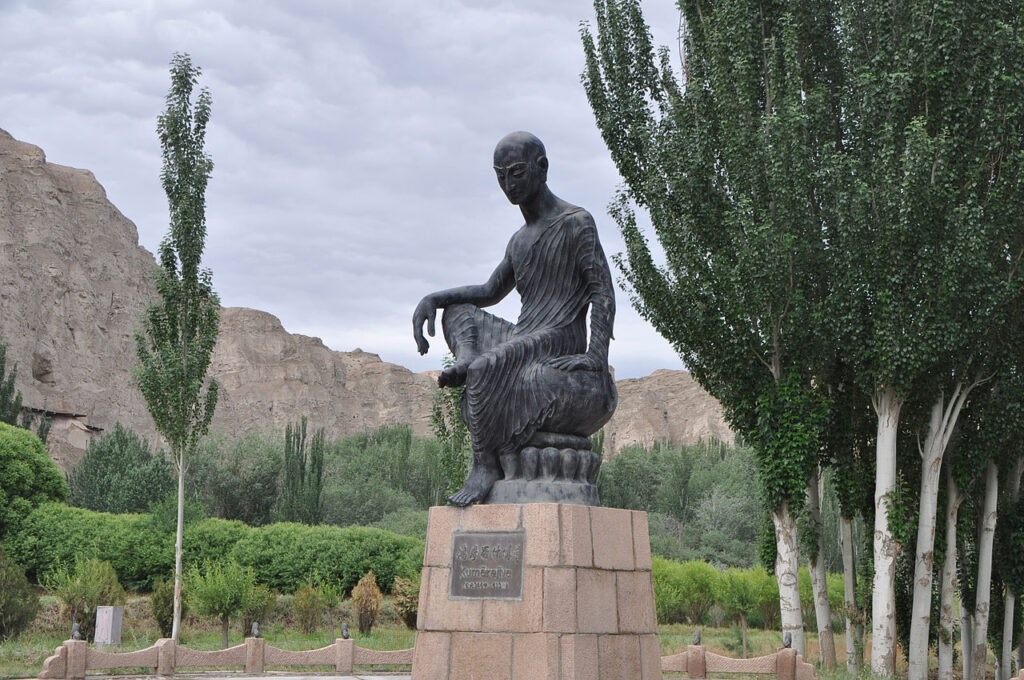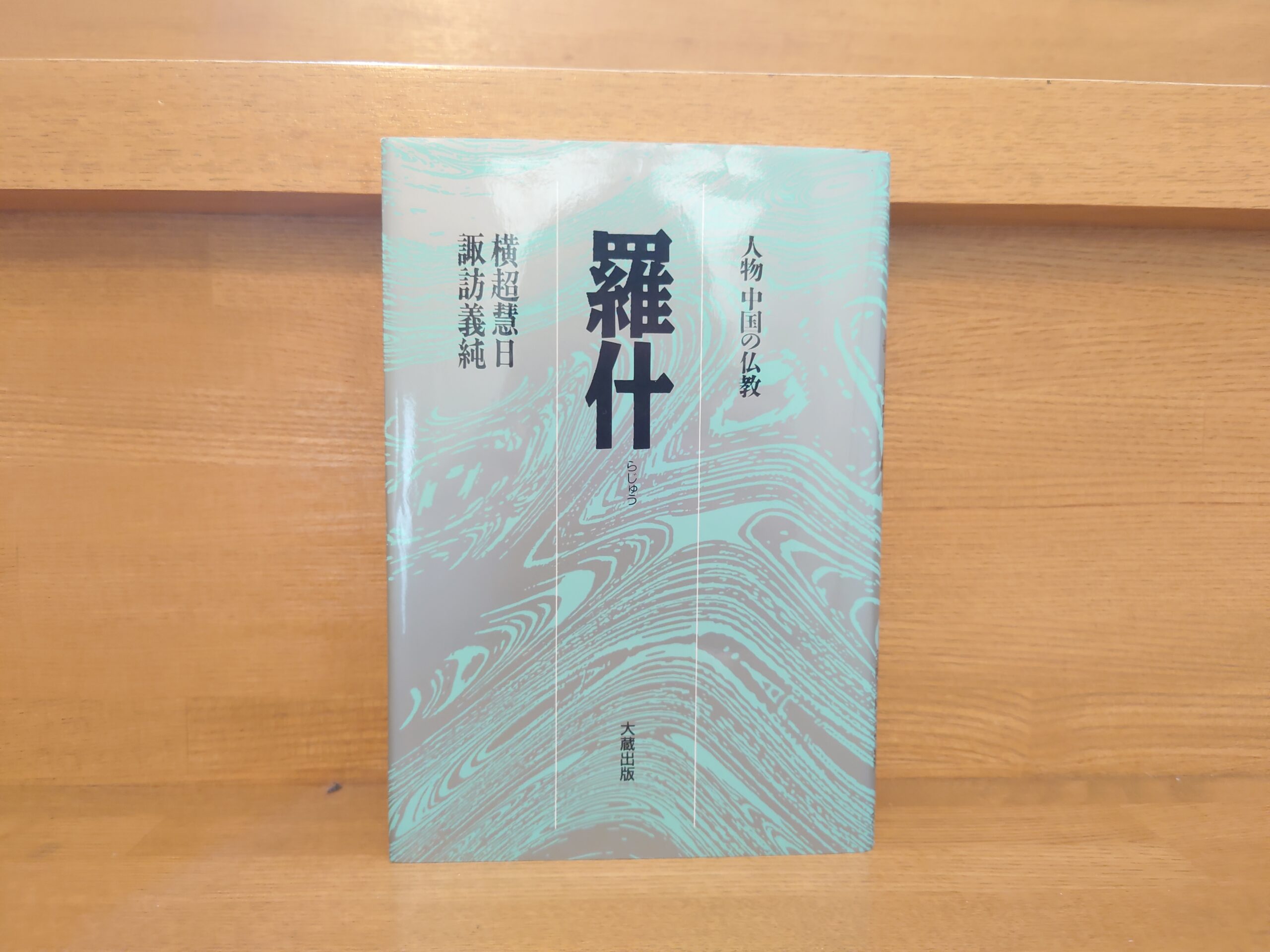Yoko Chao Huiyi and Yoshijun Suwa, "People: Buddhism in China - Rashi" Summary and Comments - Recommended to learn about the tumultuous life of the translator monk Hatomarai Rashi!
This time I would like to introduce "Personages: Buddhism in China, Rashi" by Yokocho Huiyi and Yoshijun Suwa, published by Daizo Shuppan in 1982. I read the third printing of the new edition in 2006.

This book is a recommended biography of the translator monk Hatomarai Tzu, famous for his Chinese translations of the Lotus Sutra, the Koreana Sutra, and the Amitabha Sutra.
In the "Introduction" by Yoshizumi Suwa about this book and Hatomarashi, he states
in Chinese Buddhismhato-mara-shi(Kumārajīva 350-409?) was probably first and foremost a great translator of Chinese Buddhist scriptures. The Later Han DynastyAnseikou.ShirukasenHe is a representative of the old translators who established the Buddhist language, which had been miscellany translated since then, and who mainly used the intentional translations before Xuanzang (602-644).
He is listed as the first of the four great translators of Chinese Buddhism (Rushan, Shinzei, Xuanzang, and Fugu). His translations cover the sutras, the law, and the treatises, and according to the De San Zang Ji Shu, vol. 2, the total number of translations is 294 volumes in 35 parts. In terms of quantity, it is the largest translation in the history of the Western Jin Dynasty.Buddhist religious services in memory of those drowned in a dungeon(232-310?). The number of Buddhist scriptures translated by Raju is less than that of the 154 volumes in 309 parts by Xuanzang (232-310?), and is considerably different from the 1347 volumes in 76 parts by Xuanzang at the beginning of the Tang Dynasty. However, as we shall see later, the Buddhist scriptures translated by Raju consisted largely of the sutras of the Chung-guan system of Long-ju, which formed the basis of Mahayana Buddhist thought, and these, together with Raju's excellent guidance, formed the main stream or bottom line of Chinese Buddhist thought. This, together with Lāshi's excellent guidance, made them the main stream or base of Chinese Buddhist thought, which, since the Later Han period, had been a chaotic and diverse influx of Buddhist thought in China. The significance of Rushan in the history of Chinese Buddhist thought is immeasurable. This was possible not only because of the time and environment, but above all because Rāshi himself was not only a translator, but also an outstanding thinker of Chinese Buddhist thought. This is the reason why Rushan andsmall mountain retreat(at sentence-end, falling tone) indicates a confident conclusionof great wisdomThe details can be seen in the "Mahayana Mahayi Chapters" (Manjushri Sutra, Vol. 96), which tells of a question and answer with (334-416). (omitted).
Still, it is a city-state in remote Central Asia,Turtle Island (esp. the Gulf of California, but also Sakhalin and the Kuril Islands)(Today'swarehouse carFrom a mere member of the royal family of China's Chang'an province (Chang'an, China), Luoshih had to go through an extraordinary and difficult life before making a name for himself as a translator and a great thinker. If one of the wheels of history had not turned and Ruoshi, who had remained in Liangzhou for 16 years, had not been welcomed to Chang'an, for example, Ruoshi's achievements as we know them today would not have been possible, and the course of Chinese Buddhism would have taken a very different path thereafter. In this section, we will examine the life and achievements of Raju, paying attention to the period and environment in which he lived.
Yokochao Huiyi and Yoshijun Suwa, "Personage: Buddhism in China, Rushan", 2006, new edition, 3rd printing, p. 59-60.
As will be discussed in the second half of this commentary, Hatomarashi had to go through an extraordinary and difficult life. Hatomarashi's life of hardship is well known, and each hardship will be examined in detail in this book.
In this book, you will realize how much hard work went into the translation of the sutras left behind by Hatumarashi and other translators, which we in later generations take for granted.
By Toru Funayama, previously featured on this blog.How the Buddhist Scriptures Were Translated into Chinese When the Sutras Became Scripture.I highly recommend this book as a set with
The above is "Yoko Chao Huiyi and Yoshijun Suwa, "Personages: Buddhism in China - Rashi" - Recommended to learn about the tumultuous life of the translated monk Hatomarai Rashi! The above is the "People: Buddhism in China" by Yokochao Huiyi and Suwa Yoshijun.
Next Article.
Click here to read the previous article.
Related Articles





































